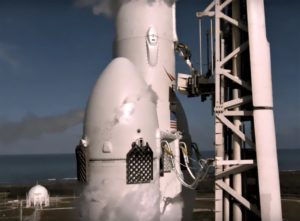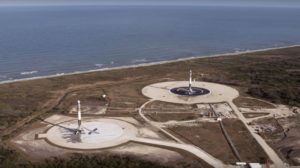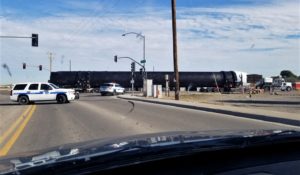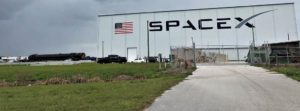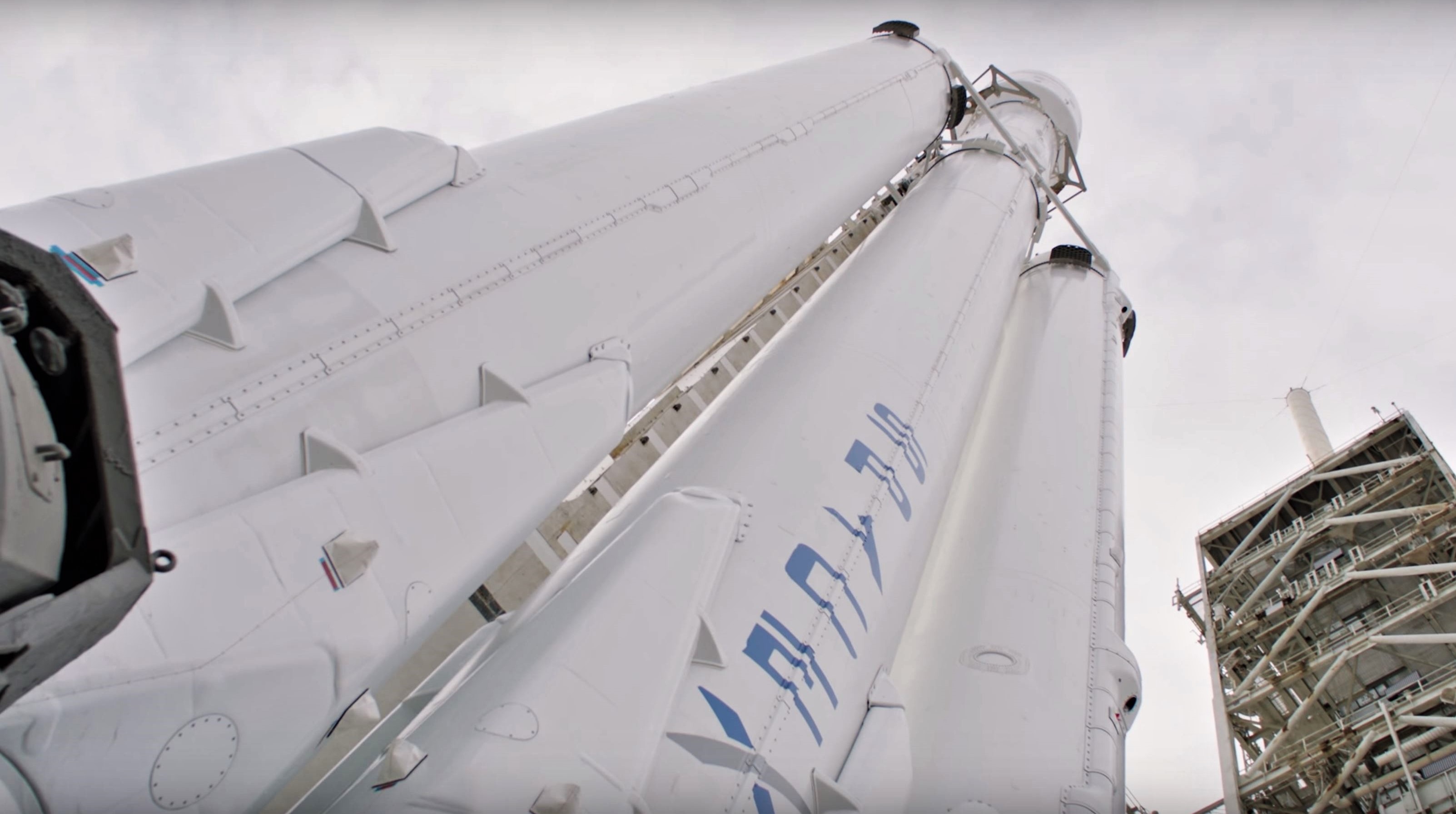

News
SpaceX customer reaffirms third Falcon Heavy mission’s Q2 2019 launch target
Taiwan’s National Space Organization (NSO) has reaffirmed a Q2 2019 launch target for SpaceX’s third-ever Falcon Heavy mission, a US Air Force-sponsored test launch opportunity known as Space Test Program 2 (STP-2).
Set to host approximately two dozen customer spacecraft, one of the largest and most monetarily significant copassengers riding on STP-2 is Formosat-7, a six-satellite Earth sensing constellation built with the cooperation of Taiwan’s NSO and the United States’ NOAA (National Oceanic and Atmospheric Administration) for around $105M. If successfully launched, Formosat-7 will dramatically expand Taiwan’s domestic Earth observation and weather forecasting capabilities, important for a nation at high risk of typhoons and flooding rains.
Formosat-7, the latest generation of the series, is jointly developed by #Taiwan’s National Space Organization and the #US National Oceanic and Atmospheric Administration following an agreement signed in 2010. https://t.co/7hj2ijFutZ
— Asia Times (@asiatimesonline) January 7, 2019
Although Taiwan officials were unable to offer a target more specific than Q2 2019 (April to June), it’s understood by way of NASA comments and sources inside SpaceX that STP-2’s tentative launch target currently stands in April. For a number of reasons, chances are high that that ambitious launch target will slip into May or June. Notably, the simple fact that Falcon Heavy’s next two launches (Arabsat 6A and STP-2) are scheduled within just a few months of each other almost singlehandedly wipes out any possibility that both Heavy launches will feature all-new side and center boosters, strongly implying that whichever mission flies second will be launching on three flight-proven boosters.

To further ramp up the difficulty (and improbability), those three flight-proven Block 5 boosters would have to launch as an integrated Falcon Heavy, safely land (two by landing zone, one by drone ship), be transported to SpaceX facilities, and finally be refurbished and reintegrated for their second launch in no more than 30 to 120 days from start to finish. SpaceX’s record for Falcon 9 booster turnaround (the time between two launches) currently stands at 72 days for Block 4 hardware and 74 days for Block 5, meaning that the company could effectively need to simultaneously break its booster turnaround record three times in order to preserve a number of possible launch dates for both missions.
Look who was waving at passing planes over McGregor today!
A Falcon Heavy side booster on the McGregor test stand for a static fire test. pic.twitter.com/S7af6b0gHk
— NSF – NASASpaceflight.com (@NASASpaceflight) November 18, 2018
If it turns out the USAF is actually unwilling to fly its first Falcon Heavy mission on all flight-proven boosters (a strong possibility) or that that has never been the plan, STP-2’s claimed Q2 2019 target would likely have to slip several months into 2019. This would afford SpaceX more time and resources to build an extra three new Falcon Heavy boosters (two sides, one center), each of which requires a bare minimum of several weeks of dedicated production time and months of lead time (at least for the center core), all while preventing or significantly slowing the completed production of other new Falcon boosters.
The exact state of SpaceX’s Falcon 9 and Heavy production is currently unknown, with indications that the company might be building or have already finished core number B1055 or higher, but it’s safe to say that there is not exactly a lot of slack in the production lines in the first half of 2019. Most important, SpaceX likely needs to begin production of the human-rated Falcon 9 boosters that will ultimately launch the company’s first two crewed Crew Dragons as early as June and August, respectively.
- Falcon Heavy is seen here lifting off during its spectacular launch debut. (SpaceX)
- LZ-1 and LZ-2, circa February 2018. (SpaceX)
- A Falcon Heavy side booster was spotted eastbound in Arizona on November 10th. (Reddit – beast-sam)
- The second Falcon Heavy booster in four weeks was spotted Eastbound in Arizona by SpaceX Facebook group member Eric Schmidt on Dec. 3. (Eric Schmidt – Facebook)
- The second (and third) flight of Falcon Heavy is even closer to reality as a new side booster heads to Florida after finishing static fire tests in Texas. (Reddit /u/e32revelry)
- The next Falcon Heavy’s first side booster delivery was caught by several onlookers around December 21. (Instagram)
If the first Falcon 9 set to launch an uncrewed Crew Dragon (B1051) is anything to go off of, each human-rated Falcon 9 is put through an exceptionally time-consuming and strenuous range of tests to satisfy NASA’s requirements, requiring a considerable amount of extra resources (infrastructure, staff, time) to be produced and readied for launch. B1051 likely spent 3+ months in McGregor, Texas performing checks and one or several static fire tests, whereas a more normal Falcon booster typically spends no more than 3-6 weeks at SpaceX’s test facilities before shipping to its launch pad.
Ultimately, time will tell which hurdles the company’s executives (and hopefully engineers) have selected for its next two Falcon Heavy launches: an extraordinary feat of Falcon reusability or a Tesla-reminiscent period of Falcon production hell?
For prompt updates, on-the-ground perspectives, and unique glimpses of SpaceX’s rocket recovery fleet check out our brand new LaunchPad and LandingZone newsletters!
Elon Musk
Why Tesla’s Q3 could be one of its biggest quarters in history
Tesla could stand to benefit from the removal of the $7,500 EV tax credit at the end of Q3.

Tesla has gotten off to a slow start in 2025, as the first half of the year has not been one to remember from a delivery perspective.
However, Q3 could end up being one of the best the company has had in history, with the United States potentially being a major contributor to what might reverse a slow start to the year.
Earlier today, the United States’ House of Representatives officially passed President Trump’s “Big Beautiful Bill,” after it made its way through the Senate earlier this week. The bill will head to President Trump, as he looks to sign it before his July 4 deadline.
The Bill will effectively bring closure to the $7,500 EV tax credit, which will end on September 30, 2025. This means, over the next three months in the United States, those who are looking to buy an EV will have their last chance to take advantage of the credit. EVs will then be, for most people, $7,500 more expensive, in essence.
The tax credit is available to any single filer who makes under $150,000 per year, $225,000 a year to a head of household, and $300,000 to couples filing jointly.
Ending the tax credit was expected with the Trump administration, as his policies have leaned significantly toward reliance on fossil fuels, ending what he calls an “EV mandate.” He has used this phrase several times in disagreements with Tesla CEO Elon Musk.
Nevertheless, those who have been on the fence about buying a Tesla, or any EV, for that matter, will have some decisions to make in the next three months. While all companies will stand to benefit from this time crunch, Tesla could be the true winner because of its sheer volume.
If things are done correctly, meaning if Tesla can also offer incentives like 0% APR, special pricing on leasing or financing, or other advantages (like free Red, White, and Blue for a short period of time in celebration of Independence Day), it could see some real volume in sales this quarter.
You can now buy a Tesla in Red, White, and Blue for free until July 14 https://t.co/iAwhaRFOH0
— TESLARATI (@Teslarati) July 3, 2025
Tesla is just a shade under 721,000 deliveries for the year, so it’s on pace for roughly 1.4 million for 2025. This would be a decrease from the 1.8 million cars it delivered in each of the last two years. Traditionally, the second half of the year has produced Tesla’s strongest quarters. Its top three quarters in terms of deliveries are Q4 2024 with 495,570 vehicles, Q4 2023 with 484,507 vehicles, and Q3 2024 with 462,890 vehicles.
Elon Musk
Tesla Full Self-Driving testing continues European expansion: here’s where
Tesla has launched Full Self-Driving testing in a fifth European country ahead of its launch.

Tesla Full Self-Driving is being tested in several countries across Europe as the company prepares to launch its driver assistance suite on the continent.
The company is still working through the regulatory hurdles with the European Union. They are plentiful and difficult to navigate, but Tesla is still making progress as its testing of FSD continues to expand.
Today, it officially began testing in a new country, as more regions open their doors to Tesla. Many owners and potential customers in Europe are awaiting its launch.
On Thursday, Tesla officially confirmed that Full Self-Driving testing is underway in Spain, as the company shared an extensive video of a trip through the streets of Madrid:
Como pez en el agua …
FSD Supervised testing in Madrid, Spain
Pending regulatory approval pic.twitter.com/txTgoWseuA
— Tesla Europe & Middle East (@teslaeurope) July 3, 2025
The launch of Full Self-Driving testing in Spain marks the fifth country in which Tesla has started assessing the suite’s performance in the European market.
Across the past several months, Tesla has been expanding the scope of countries where Full Self-Driving is being tested. It has already made it to Italy, France, the Netherlands, and Germany previously.
Tesla has already filed applications to have Full Self-Driving (Supervised) launched across the European Union, but CEO Elon Musk has indicated that this particular step has been the delay in the official launch of the suite thus far.
In mid-June, Musk revealed the frustrations Tesla has felt during its efforts to launch its Full Self-Driving (Supervised) suite in Europe, stating that the holdup can be attributed to authorities in various countries, as well as the EU as a whole:
Tesla Full Self-Driving’s European launch frustrations revealed by Elon Musk
“Waiting for Dutch authorities and then the EU to approve. Very frustrating and hurts the safety of people in Europe, as driving with advanced Autopilot on results in four times fewer injuries! Please ask your governing authorities to accelerate making Tesla safer in Europe.”
Waiting for Dutch authorities and then the EU to approve.
Very frustrating and hurts the safety of people in Europe, as driving with advanced Autopilot on results in four times fewer injuries!
Please ask your governing authorities to accelerate making Tesla safer in Europe. https://t.co/QIYCXhhaQp
— Elon Musk (@elonmusk) June 11, 2025
Tesla said last year that it planned to launch Full Self-Driving in Europe in 2025.
Elon Musk
xAI’s Memphis data center receives air permit despite community criticism
xAI welcomed the development in a post on its official xAI Memphis account on X.

Elon Musk’s artificial intelligence startup xAI has secured an air permit from Memphis health officials for its data center project, despite critics’ opposition and pending legal action. The Shelby County Health Department approved the permit this week, allowing xAI to operate 15 mobile gas turbines at its facility.
Air permit granted
The air permit comes after months of protests from Memphis residents and environmental justice advocates, who alleged that xAI violated the Clean Air Act by operating gas turbines without prior approval, as per a report from WIRED.
The Southern Environmental Law Center (SELC) and the NAACP has claimed that xAI installed dozens of gas turbines at its new data campus without acquiring the mandatory Prevention of Significant Deterioration (PSD) permit required for large-scale emission sources.
Local officials previously stated the turbines were considered “temporary” and thus not subject to stricter permitting. xAI applied for an air permit in January 2025, and in June, Memphis Mayor Paul Young acknowledged that the company was operating 21 turbines. SELC, however, has claimed that aerial footage shows the number may be as high as 35.
Critics are not giving up
Civil rights groups have stated that they intend to move forward with legal action. “xAI’s decision to install and operate dozens of polluting gas turbines without any permits or public oversight is a clear violation of the Clean Air Act,” said Patrick Anderson, senior attorney at SELC.
“Over the last year, these turbines have pumped out pollution that threatens the health of Memphis families. This notice paves the way for a lawsuit that can hold xAI accountable for its unlawful refusal to get permits for its gas turbines,” he added.
Sharon Wilson, a certified optical gas imaging thermographer, also described the emissions cloud in Memphis as notable. “I expected to see the typical power plant type of pollution that I see. What I saw was way worse than what I expected,” she said.
-

 Elon Musk3 days ago
Elon Musk3 days agoTesla investors will be shocked by Jim Cramer’s latest assessment
-

 News1 week ago
News1 week agoTesla Robotaxi’s biggest challenge seems to be this one thing
-

 News2 weeks ago
News2 weeks agoTexas lawmakers urge Tesla to delay Austin robotaxi launch to September
-

 Elon Musk2 weeks ago
Elon Musk2 weeks agoFirst Look at Tesla’s Robotaxi App: features, design, and more
-

 Elon Musk2 weeks ago
Elon Musk2 weeks agoxAI’s Grok 3 partners with Oracle Cloud for corporate AI innovation
-

 News2 weeks ago
News2 weeks agoSpaceX and Elon Musk share insights on Starship Ship 36’s RUD
-

 News2 weeks ago
News2 weeks agoWatch Tesla’s first driverless public Robotaxi rides in Texas
-

 News2 weeks ago
News2 weeks agoTesla has started rolling out initial round of Robotaxi invites

